What are the best slug barriers that you can use in the Garden.
Well the most popular barrier that’s sold in the UK is copper tape for slug repelling. Which just shows how wrong most people get their barrier selection.
“A recent RHS study in a garden-realistic scenario found no reduction in slug damage from barriers made of copper tape, bark mulch, eggshells, sharp grit, or wool pellets (Royal Horticultural Society, 2023).”
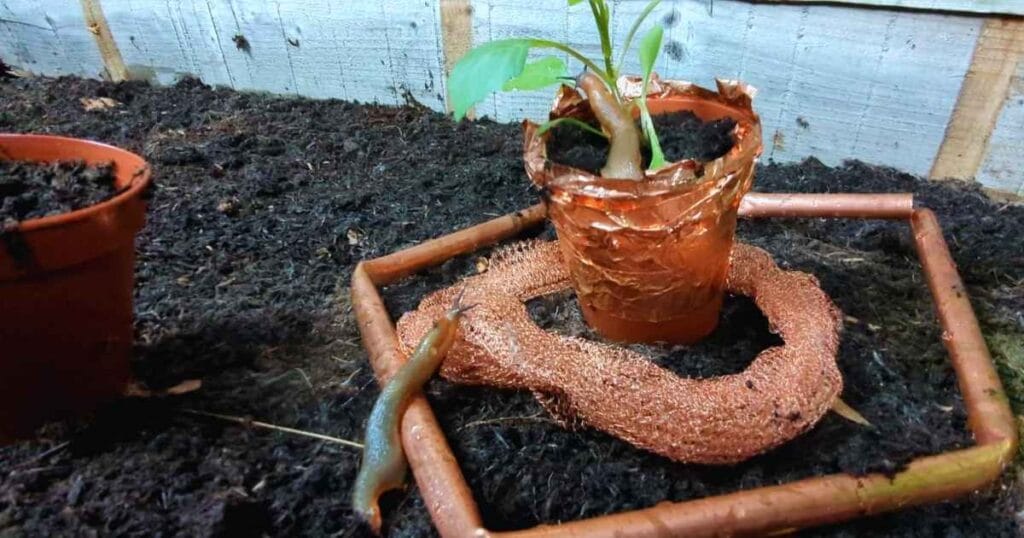
We’re not saying copper tape doesn’t work against slugs, but it really shouldn’t be the most popular slug barrier—especially since it’s not even among the top three. If you’re specifically interested in copper, we’ve written a detailed blog post on the topic, which you can find here. That post includes a video demonstrating why copper has some effect, but also why we don’t rate it very highly as a slug and snail barrier. We recommend using it only as a supplementary measure alongside more effective barriers.
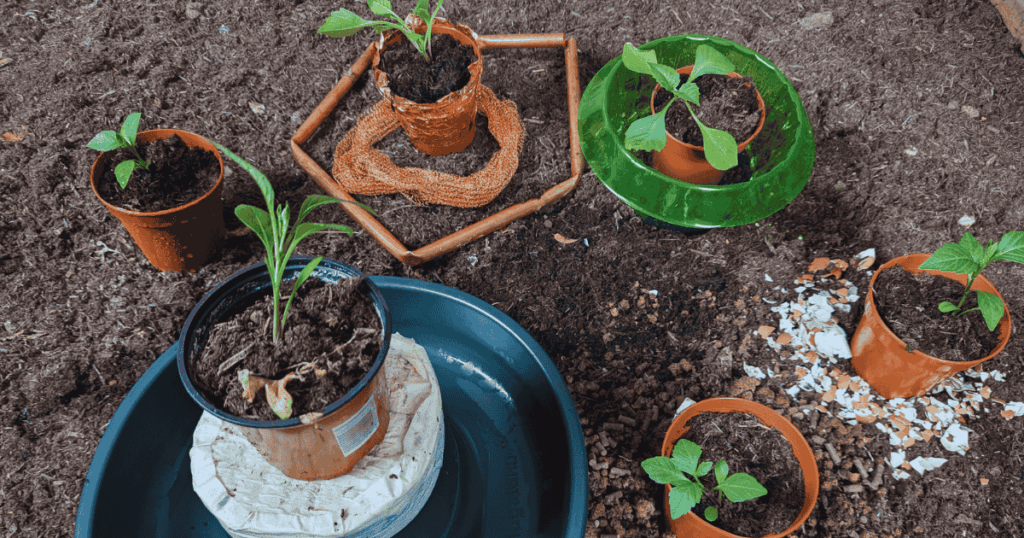
What is the perfect slug barrier.
Whilst we were trying to think of a way to objectivley rank slug barriers from best to worse, we had a think about what the perfect slug barrier would be, so we could assess the properties of existing barriers aswell as barriers we decided to design ourselves.
A slug barrier should be immpasible
we think the most important factor of a barrier is it’s “immpasibility” as that’s exactly why you use a barrier, if it doesn’t have this it doesn’t matter if it scores well on all other features. So a perfect slug and snail barrier will be immposible for all slugs and snails of all shapes and sizes to get past.
a slug barrier should be good for the enviroment
“A slug barrier should not be toxic or harmful to any living beings or the soil. Preferably, it should be locally sourced and sustainably made. It should also be incredibly durable, requiring no replacement.
a slug barrier should be free
Sure, in a perfect world, a slug barrier would be free—like simply piling up steep earth to block them. But since slugs are expert climbers, diggers, and come in all shapes and sizes, that’s not a realistic solution. Instead, the next best thing is a barrier that costs as little as possible.
A slug barrier should require no maintenance, topping up, or replacing.
“Once a ‘perfect’ barrier is in place, you shouldn’t need to constantly invest time to maintain its effectiveness. For example, the fact that coffee grounds and wool pellets degrade over time isn’t ideal. Replacing them once a season or every few months might be manageable for a small plot, but it’s far from perfect. Other methods for example are garlic spray, but it doesn’t work and even if it did, it’s a repellent that’s dissolvable in water, so will wash away with rain so easily.

Above you can see how we rate different slug barriers.
You can see how we came up with these scores in our 3-step guide to a slug-free garden . In this guide, we break down slug control into three easy steps, which are generally followed in order—starting with the most effective and affordable methods and ending with the least effective and most expensive (with an exception for protecting potted plants from slugs and snails).
Step 1 – Control the environment.
Step 2 – Use the best barrier. If you’re only protecting potted plants, you can skip directly to this step.
Step 3 – Remove or kill slugs. This is a last resort since it’s only a short-term solution. The reason you have so many slugs and snails is that your garden provides them with the perfect environment to eat, sleep, and reproduce. Simply killing them doesn’t address these underlying issues—so once they’re gone, they’ll quickly return in large numbers, as each slug can lay hundreds of eggs.

What is the best slug barrier?
So this is a little bit of a complicated question as it depends where you’re growing. The most immpasible barrier is a salt water filled slugstand, but this is designed mainly for protecting potted plants. With a slugstand you quite simply, fill the stand with water or salt water to create an impassable barrier, then place your pots or planters on top. It’s designed so that slugs and snails can’t reach across, and the central pillar is tall enough to keep your plants safely out of reach. Just ensure it stays topped up and doesn’t overflow by using a pot that’s large enough to cover it. You can see a post we did about the slugstand: Here and you can see the product page about it: Here
The best slug barrier for plants growing in the ground—such as in raised beds or borders—is a slug collar or slug fence. Below, you can see an example of both being used together, combining two different barriers for extra protection.
If you’re dealing with a major slug and snail invasion and have already implemented all the steps from Step 1, you can refer to the table above to explore additional barriers. You could enhance your setup by adding coffee granules or wool pellets, or even attaching copper tape to your slug collars for extra defense.
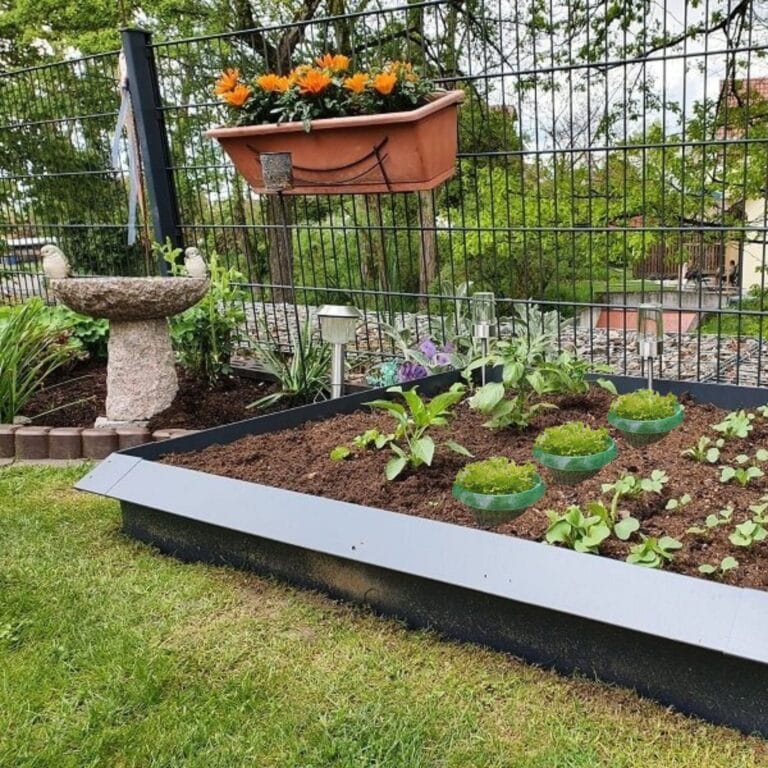
Salt barrier for plants
This can be done in a few different scenarios, but it must be handled carefully since salt can also harm plants. A coarse-grain salt, like SlugSalt, is generally recommended, as it lasts longer and is less likely to be blown away or dissolve quickly in the rain. and i’ll link to you a full article that i did: Here, so that you use it in the correct way and don’t end up with any unintended plant deaths!
conclusion about slug barriers
Slugstand is the best slug barrier for immpasiblity and also for potted plants, slugs can’t crawl though salt water and as soon as they feel it they retreat.
an overhanging barrier like a slug fence or slug collar is the best for plants in the ground.
Salt can be a great barrier in certain limited situations.
Other barriers don’t really come close in terms of their immpasiblity, so there we go.
This is the only guide you need to get rid of your slug problem in the Garden: 3 steps to slug free

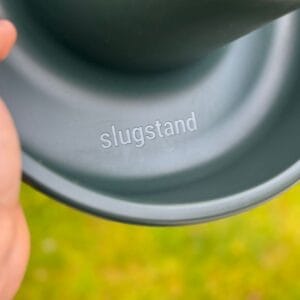
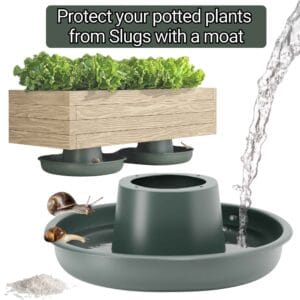

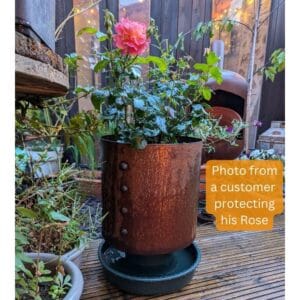
One Response